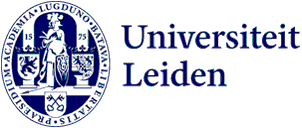16 search results for “astronomy” in the Student website
-
One step closer to understanding planet-formation: Julia Santos refutes a 20 year standing paradigm
How do atoms and molecules end up forming planets? That's what astrochemist Julia Santos studied during her PhD. She discovered the dominant process behind the formation of methanol in space – a finding that surprised the entire field.
-
 Ana Cristina Arcos Marin
Ana Cristina Arcos MarinFaculty of Science
a.c.arcos.marin@liacs.leidenuniv.nl | +31 71 527 2727
-
Black holes are sometimes gigantic volcanoes. Martijn Oei earned his PhD on the subject, with honours
Not everything that comes close to a black hole is swallowed by it. Black holes can also hurl material away, and that chance turns out to be considerably bigger than previously thought. Martijn Oei's accidental discovery and his subsequent research on it earned him a cum laude promotion on 12 Decemb…
-
New generation galaxy formation simulations on the horizon – Evgenii Chaikin received his doctorate with honours
Simulations of galaxy formation provide much more information about galaxies than a telescope. Simulations have been improving significantly in recent years. Astronomer Evgenii Chaikin made such a significant contribution to this field that he graduated with honours on February 27th.
-
Evidence of a massive stellar storm on a nearby star
Astronomer Joseph Callingham and his team have observed for the first time a clear signal from a giant burst from a star outside our solar system. This would have a devastating impact on any unfortunate planet orbiting the star.
-
 Huub Rottgering
Huub RottgeringFaculty of Science
rottgering@strw.leidenuniv.nl | +31 71 527 5851
-
First ring-forming embedded planet discovered around a young sun-like star
Astronomers led by Leiden PhD candidate Richelle van Capelleveen have, for the first time, discovered an exoplanet that has carved a bright gap in the protoplanetary disc around its star. This rare observation provides new insights into how young planets shape their surroundings.
-
This is how astronomers found out how three stars were ejected from star cluster R136
Astronomers led by Simon Portegies Zwart used simulations to reconstruct how three stars were ejected from the star cluster R136, 60,000 years ago. The analysis reveals that five stars were involved in the event in the Tarantula Nebula.
-
Lights out, stars on: Daan Roosegaarde on Seeing Stars Leiden
‘What if we switch off all the lights one evening? That idea crossed my mind from time to time. And when I mentioned it to a taxi driver one day, he said: “Oh, you mean: lights out, stars on!” That’s not completely true, of course, because the stars are always on, but his phrase summed up the idea n…
-
ESA presents first crystal-clear Euclid photos of the cosmos
The first full-colour images of the cosmos from ESA's space telescope Euclid were presented today. Never before has a telescope been able to take such crystal-clear astronomical images of such a large part of the sky and so far into the deep universe. The five images illustrate Euclid's full potential;…
-
Student cleans up archival data and uncovers two stellar cocoons
While investigating 16 years of images of young stars from a retired astronomical camera, Leiden master's student Sam de Regt discovered that two of those stars were still enveloped in birth clouds. Never before has anyone captured these two stars in so much detail. He publishes his data-cleaning method…
-
First scientific images Euclid telescope exceed all expectations
Space telescope Euclid is capable of unravelling the secrets of the universe. That is what the images published by ESA today show, according to astronomers working with the telescope's data. The images exceed all expectations. Scientists within the Euclid consortium, including astronomers Henk Hoekstra…
-
The most read stories of 2021 from Leiden University
Research into depression in children, Leiden alumni in the Dutch House of Representatives and an exceptional achievement by one of our students: what do this topics have in common? They are among our most read stories of 2021.
-
Mesmerising images from James Webb space telescope
The 'deepest and sharpest' image of the Universe to date: the first photos from the new James Webb space telescope yesterday mesmerised astronomers and the public alike. Leiden Professor of Molecular Astrophysics, Ewine van Dishoeck, spoke to various media outlets about the first images, which include…
-
After the launch of the next big space mission: ‘This is a big step towards understanding dark matter and dark energy.’
Henk Hoekstra and Alessandra Silvestri work on the astronomy and theoretical physics in the Euclid mission. These Dutch researchers are part of the mission.
-
Tracking the origin and evolution of molecules in space
How do molecules originate and evolve in space? And how does that ultimately determine the chemical composition of planets and their atmospheres? The Dutch Astrochemistry Network (DANIII) receives 1.6 million euros from NWO to find out. A large group of Leiden astronomers and chemists is contributing:…
